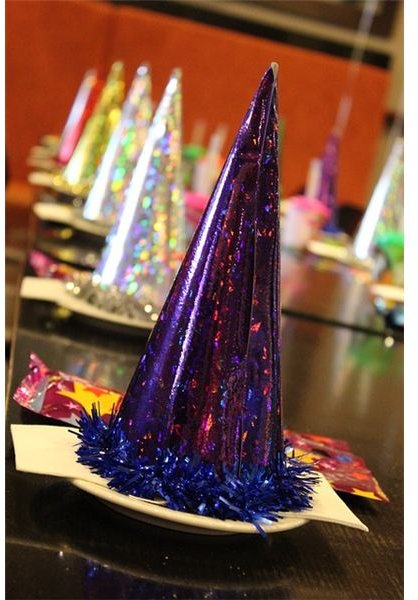Unit Rate: Party Planning Math Lesson Plan
Objective
Students will use the concept of unit rate to determine costs and identify ratios associated with planning a party.
CCSS.MATH.CONTENT.6.RP.A.2
Understand the concept of a unit rate a/b associated with a ratio a:b with b ≠ 0, and use rate language in the context of a ratio relationship.
Materials
- Grocery and party store ads
- Pencils
- Paper
- Printed or game money
Lesson Procedure
Step One: Open a discussion with students on hosting parties, including what costs and plans might be associated with preparing for an event for a group of people. Use the example of a wedding for which costs are determined per individual guest for the meal at the reception. Write a ratio to demonstrate the concept of unit rate for such an event, for example:
35.00/ 1 guest
Show students how to find unit rate in such a situation, for example:
Price of reception dinner: $3500.00
Number of guests: 100
Price of dinner ÷ number of guests= cost per guest
3500 ÷ 100 = 35 ($35.00 per guest)
Explain that students will use unit rate to determine the ratio of a/b, in which b is always greater than 0, and that unit rate is generally used to find the ratio when b stands for a single unit (such as miles per hour, cost per one item, etc.)
Step Two: Hand students samples of ads from various stores, including grocery and party supply stores. Students will be asked to study the ads and identify a theme for a party they would like to give based on the items they see in the ad. For example, they might choose a Hawaiian luau or a graduation party.
Working individually or cooperatively (based on teacher preference), students will determine the number of people who will attend the party. Based on the number, students will begin to select items for the party, using the ads as a reference for prices.
Students will work on two methods for practicing the skill of identifying unit rate:
- Students will determine any items packaged as a group (such as party hats, packages of food items, party favors and so on). Using the base price for the group of items, students will identify the unit rate for each individual item.
Example: Package of 6 party hats for $2.99 would be a unit rate of approximately $0.50 for one party hat.
- Students will determine the total cost of items they will purchase for the party, and will use this number to identify the cost per individual party guest (by finding the unit rate).
Step Three: Give students a set amount of money (such as $500). Explain to students that they will be using this money as their “budget” for giving the party. Students will work to plan their parties, identifying unit rate cost of individual party items where applicable. Students will calculate the cost per individual party guest and decide whether they would like to make changes to their parties or guest lists in order to save or spend more money and stay within their budgets.
Assessment
Collect party planning calculations. Students who have accurately calculated costs and stayed within their budgets will have successfully demonstrated their understanding of the concept of unit rate. You may want to assign a brief quiz or set of homework problems to give students practice finding the unit rate based on given ratios.
Extension
Keep the grocery and party store ads for the next class session and give students time to create and trade their own unit rate word problems based on the ads. Allow students to try to solve each other’s word problems. Encourage students who have mastered the skill to work with students who still need help understanding the concept to solve the unit rate word problems.
